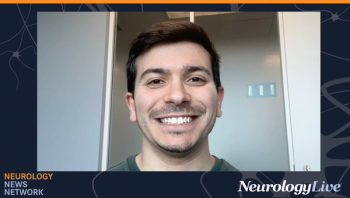
The SUDEP Movement: Past to Future
AES President Emeritus Dr. Elson So covered discussing SUDEP with your patients & their families and reviewed current and future research highlights.
At this year’s American Epilepsy Society (AES) Annual Meeting, the 14th Judith Hoyer Lecture in Epilepsy was presented by Dr. Elson So, Professor of Neurology at the Mayo Clinic College of Medicine, Minnesota, and President Emeritus of the AES.
Dr. So began by presenting an overview of the timeline of the Sudden Unexpected Death in Epilepsy (SUDEP) Movement. He noted that SUDEP was first described in 1854 but received little attention until researchers in the 1980s highlighted its importance with basic science and autopsy studies. Since then, there has been a steady increase in the number of SUDEP publications, reaching 152 in 2015.
Epilepsy Bereaved, created in 1995 and renamed SUDEP Action in 2013, led the way in promoting public awareness of SUDEP. Subsequently, several organizations have played key roles in funding research, supporting patients and families, and promoting SUDEP education. These include the Citizens for Research in Epilepsy, AES, Epilepsy Foundation, SUDEP Aware, Epilepsy Therapy Project, Danny Did Foundation, North American SUDEP Registry, Centers for Disease Control and Prevention, and National Institute of Neurologic Disorders and Stroke. Dr. So emphasized that collaboration between organizations, including formation of the SUDEP Coalition, has been instrumental to the success of the SUDEP movement.
Dr. So also addressed the issue of counseling patients and their families about SUDEP. He indicated that neurologists often do not do this and suggested that this may be at least partly because neurologists underestimate the frequency and importance of SUDEP. Dr. So cited these findings that neurologists should be aware of:
• in patients with uncontrolled epilepsy, the incidence of SUDEP is up to 10% per decade
• in a population-based cohort of individuals with childhood-onset epilepsy, almost 40% of deaths over time were due to SUDEP1
• when considering the number of years of potential life lost, SUDEP ranks second only to stroke among all neurologic disorders2
Furthermore, Dr. So indicated that there is a strong ethical basis for discussing the possibility of SUDEP with patients and their families. He made these general points and recommendations:
• all patients have the right to know about SUDEP
• not all patients want to or are ready to know about SUDEP at a certain time
• the timing and content of the counseling should be tailored to the status of the epilepsy and state of mind of the individual
Dr. So also discussed the issue of iatrogenic SUDEP. He noted that SUDEP has occurred in epilepsy clinical trials, especially in placebo groups, as well as in patients being observed in epilepsy monitoring units. Examining instances of SUDEP and near SUDEP in the latter setting has provided insight into the timing of these episodes.3 Postictal neurovegetative breakdown occurs within 3 minutes after a seizure and is ultimately reversible only with resuscitation efforts. When resuscitation is delayed beyond 10 minutes, death from cardiorespiratory arrest is inevitable. Dr. So noted that these findings support guideline recommendations for around-the-clock monitoring in epilepsy monitoring units, but he cautioned that the monitors should be observed by trained, dedicated individuals who are not distracted by other tasks (e.g., providing medications).
Dr. So then proceeded to discuss a recent study reporting that the risk of SUDEP was significantly increased (odds ratio, 9.5) in patients with 1 or more seizures (versus no seizures) in the preceding month.4 This effect was independent of the degree of chronic seizure control, suggesting that acute exacerbation of the seizure disorder may be an important etiologic factor.
Before concluding, Dr. So briefly highlighted the results of some recent animal model studies that provide insight into the etiology of SUDEP:
• fluoxetine, a selective serotonin reuptake inhibitor, was able to abort respiratory arrest, suggesting that serotonin may play an important role in modulating the risk of SUDEP
• seizures were more likely to be fatal if they occurred during sleep than during wakefulness
• laryngospasm leading to upper airway obstruction was demonstrated in one model
• spreading depolarization into the brainstem was shown to mediate sudden cardiorespiratory arrest
Dr. So indicated that one of the main goals of future research is to discover biomarkers that identify patients with an increased risk of SUDEP.
So, E. The SUDEP Movement: from Inception to the Goal, 2016, American Epilepsy Society Annual Meeting,
Disclosures:
1. Sillanpaa M, Shinnar S.
2. Thurman DJ, et al.
3. Ryvlin P, et al.
4. Zhang WW, et al.
Newsletter
Keep your finger on the pulse of neurology—subscribe to NeurologyLive for expert interviews, new data, and breakthrough treatment updates.

























